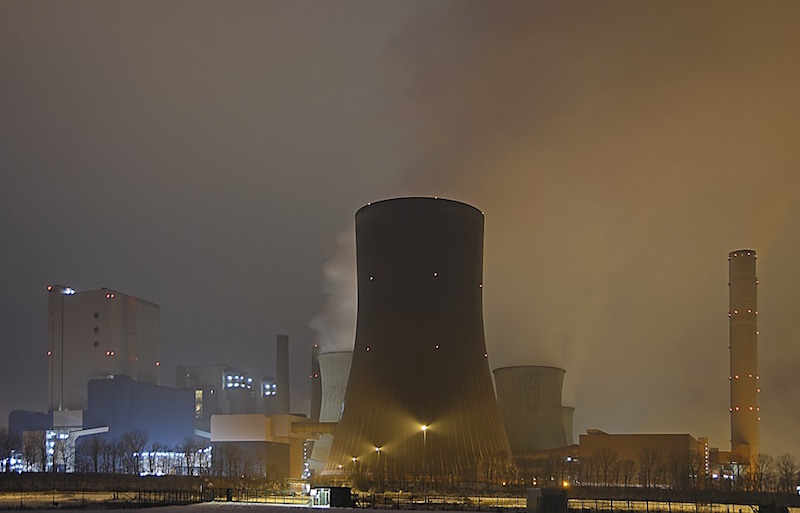In light of the positive news from AIA concerning progress toward its 2030 Commitment targets, it’s nice to see the AEC community showing resolve in this highly charged, post-Paris Climate Accord pullout political environment.
The number of firms involved in AIA’s voluntary pact to slash energy consumption in buildings grew to more than 400 in July. A select number of design practices have already exceeded the initiative’s ambitious target of a portfolio-average predicted energy savings of 70% or greater. To date, more than 330 individual projects designed by 2030 Commitment signatories met or exceeded this target.
If AIA’s estimates are accurate, the environmental and economic impacts of 2030 Commitment projects are significant. The collective potential energy savings from 2016 projects represents 16.7 million metric tons of greenhouse gas emissions, or the equivalent of operating five coal-fired power plants in a given year. The projects also represent more than $1.4 billion in annual energy cost savings.
Impressive, right? But is it enough?
Perhaps not when you consider the types of projects AIA members (and most other AEC firms) work on: primarily new construction, mid- to large-size in scale.
The sleeping giant in the race to slash total energy consumption in the U.S. buildings market is the existing building stock—especially small to mid-sized commercial buildings (50,000 sf or smaller). Retail stores, gas stations, banks, office buildings, schools, auto sales centers—these structures make up 94% of the commercial property stock and represent half of the total square footage. Collectively, they consume 44% of the energy used in all buildings in the U.S., according to DOE.
There is an enormous opportunity to effect change on a wide scale through the deep energy retrofitting of existing commercial buildings. Yet to date, very little progress has been made, according to Jennifer Thorne Amann, Buildings Program Director with Washington, D.C.-based American Council for an Energy-Efficient Economy. In a new white paper, Thorne Amann breaks down the numbers: Of the 332 zero-energy and ultra-low-energy buildings tallied by the New Buildings Institute, only 35 are retrofit projects. Of these, nine were verified as ZEB.
An estimated two billion sf of commercial floor space—2.2% of the total square footage—is retrofit each year, with an average energy-use reduction of 11%. “While this retrofit rate would cover roughly one-third of the existing commercial building stock by 2030, unless the resulting energy savings substantially improve, these retrofits will fall far short of the energy savings goals adopted by states and cities,” says Thorne Amann.
Read her white paper: http://tinyurl.com/ACEEEwp
Related Stories
Green | Dec 9, 2022
Reaching carbon neutrality in building portfolios ranks high for organizations
Reaching carbon neutrality with their building portfolios ranks high in importance among sustainability goals for organizations responding to a Honeywell/Reuters survey of senior executives at 187 large, multinational corporations. Nearly nine in 10 respondents (87%) say that achieving carbon neutrality in their building portfolio is either extremely (58%) or somewhat (29%) important in relation to their overall ESG goals. Only 4% of respondents called it unimportant.
Green | Dec 9, 2022
Newly formed Net Zero Built Environment Council aims to decarbonize the built world
Global management consulting firm McKinsey recently launched the Net Zero Built Environment Council, a cross-sector coalition of industry stakeholders aiming to decarbonize the built world. The council’s chief goal is to collaboratively create new pathways to cut greenhouse gas emissions from buildings.
Office Buildings | Dec 6, 2022
‘Chicago’s healthiest office tower’ achieves LEED Gold, WELL Platinum, and WiredScore Platinum
Goettsch Partners (GP) recently completed 320 South Canal, billed as “Chicago’s healthiest office tower,” according to the architecture firm. Located across the street from Chicago Union Station and close to major expressways, the 51-story tower totals 1,740,000 sf. It includes a conference center, fitness center, restaurant, to-go market, branch bank, and a cocktail lounge in an adjacent structure, as well as parking for 324 cars/electric vehicles and 114 bicycles.
Energy Efficiency | Dec 6, 2022
Washington state’s Building Code Council mandates heat pumps in all new residential construction
The Washington State Building Code Council has voted to require heat pumps for all new residential construction starting in July 2023. The new mandate has drawn criticism over concerns that it will add costs to housing construction, especially given current supply chain challenges for heat pumps.
Geothermal Technology | Dec 6, 2022
Google spinoff uses pay-as-you-go business model to spur growth in geothermal systems
Dandelion Energy is turning to a pay-as-you-go plan similar to rooftop solar panel leasing to help property owners afford geothermal heat pump systems.
75 Top Building Products | Nov 30, 2022
75 top building products for 2022
Each year, the Building Design+Construction editorial team evaluates the vast universe of new and updated products, materials, and systems for the U.S. building design and construction market. The best-of-the-best products make up our annual 75 Top Products report.
Legislation | Nov 23, 2022
7 ways the Inflation Reduction Act will impact the building sector
HOK’s Anica Landreneau and Stephanie Miller and Smart Surfaces Coalition’s Greg Kats reveal multiple ways the IRA will benefit the built environment.
Green | Nov 13, 2022
NREL report: Using photovoltaic modules with longer lifetimes is a better option than recycling
A new report from the U.S. National Renewable Energy Laboratory (NREL) says PV module lifetime extensions should be prioritized over closed-loop recycling to reduce demand for new materials.
Green | Nov 13, 2022
Global building emissions reached record levels in 2021
Carbon-dioxide emissions from building construction and operations hit an all-time high in 2021, according to the most recent data compiled by the Global Alliance for Buildings and Construction.
Wood | Nov 1, 2022
A European manufacturer says its engineered wood products can store carbon for decades
Metsä Wood, a Finland-based manufacturer of engineered wood products, says its sustainable, material-efficient products can store carbon for decades, helping to combat climate change.

















